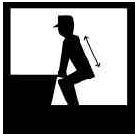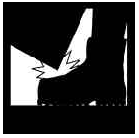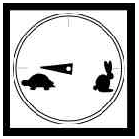Equipment maintenance and repair is necessary to avoid down time and to minimize major repairs. However, maintaining and repairing machines can lead to serious injury. Workers should be trained in shop safety and have the proper equipment to minimize or even eliminate the impact of shop accidents.
Causes of Injuries
When Repairing Machines



| REMEMBER: IF SAFETY IS NOT PRACTICED IT WON'T BE USED. SAFETY DOES NOT COST; IT PAYS! |
A Pacific Northwest Extension Publication
Idaho . Oregon . Washington
Written by Tom Karsky, University of Idaho, and A. K. Jaussi, former graduate assistant, Washington State University. For more information about farm safety, please contact: Tom Karsky, Extension Farm Safety Specialist, Department of Biological and Agricultural Engineering, University of Idaho, Moscow, ID 83844-0904, phone 208/885-7627, fax 208/885-7908, email (tkarsky@uidaho.edu). Myron Shenk, Integrated Plant Protection Center, Oregon State University, 2040 Cordley Hall, Corvallis, OR 97331-2915, phone 541/737-6274, fax 541/737-3080, email (shenkm@bcc.orst.edu). Bill Symons, Extension Safety Specialist, Biological Systems Engineering Department, Washington State University, 204 L. J. Smith Hall, Pullman, WA 99164-6120, phone 509/335-2902, fax 509/335-2722, email (symons@mail.wsu.edu). This series is supported, in part, by funds provided by the Pacific Northwest Agricultural Safety and Health Center (PNASH), Department of Environmental Health, Box 357234, University of Washington, Seattle, Washington 98195-7234 (phone: 800/330-0827, email: pnash@u.washington.edu). PNASH is funded by CDC/NIOSH Award #U07/CCU012926-02. Published and distributed in furtherance of the Acts of Congress of May 8 and June 30, 1914, by the University of Idaho Cooperative Extension System, the Oregon State University Extension Service, Washington State University Cooperative Extension, and the U.S. Department of Agriculture cooperating. The three participating Extension services provide equal opportunity in education and employment on the basis of race, color, religion, national origin, gender, age, disability, or status as a Vietnam-era veteran as required by state and federal laws.
The University of Idaho Cooperative Extension System, Oregon State University Extension Service, and Washington State University Cooperative Extension are Equal Opportunity Employers. Published December 1998 Preventing Shop Accidents Farm Safety Series PNW 512
Disclaimer and Reproduction Information: Information in NASD does not represent NIOSH policy. Information included in NASD appears by permission of the author and/or copyright holder. More